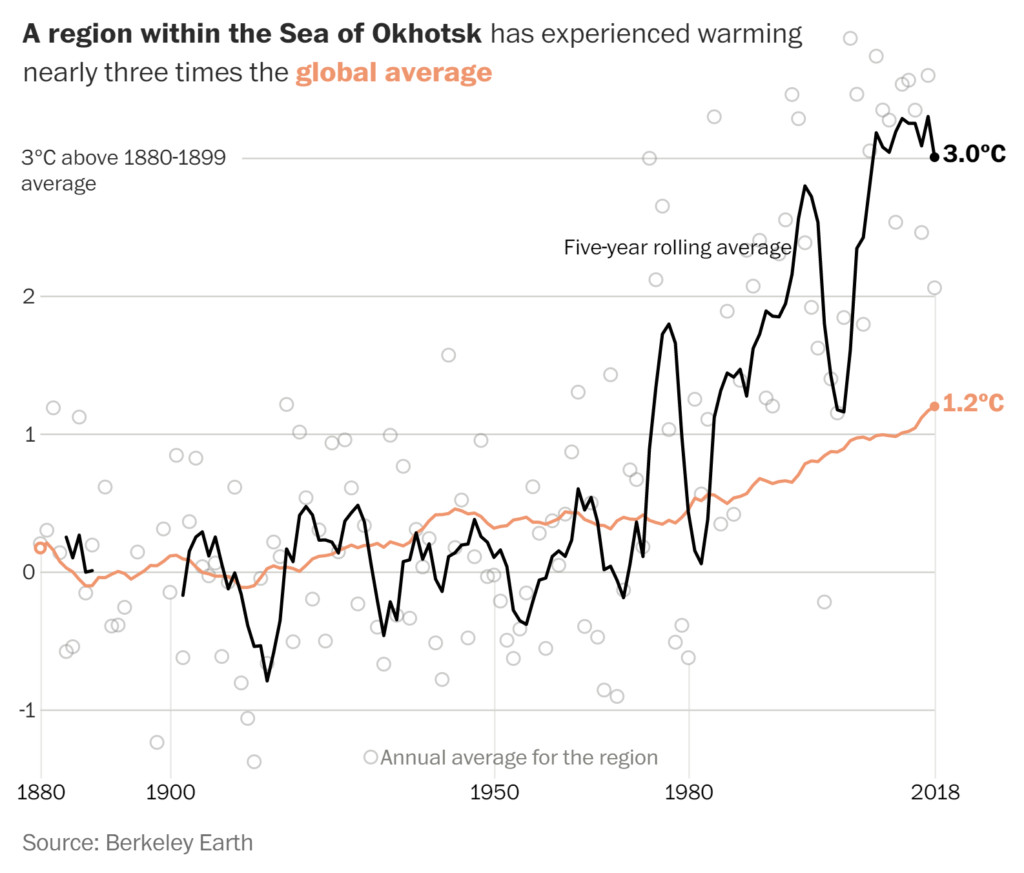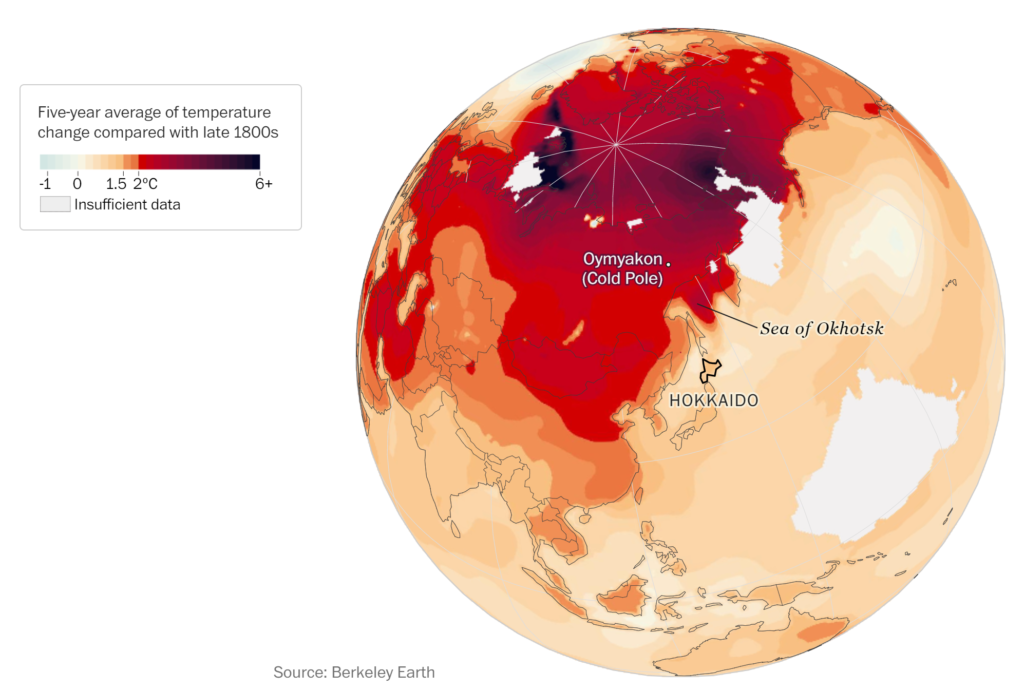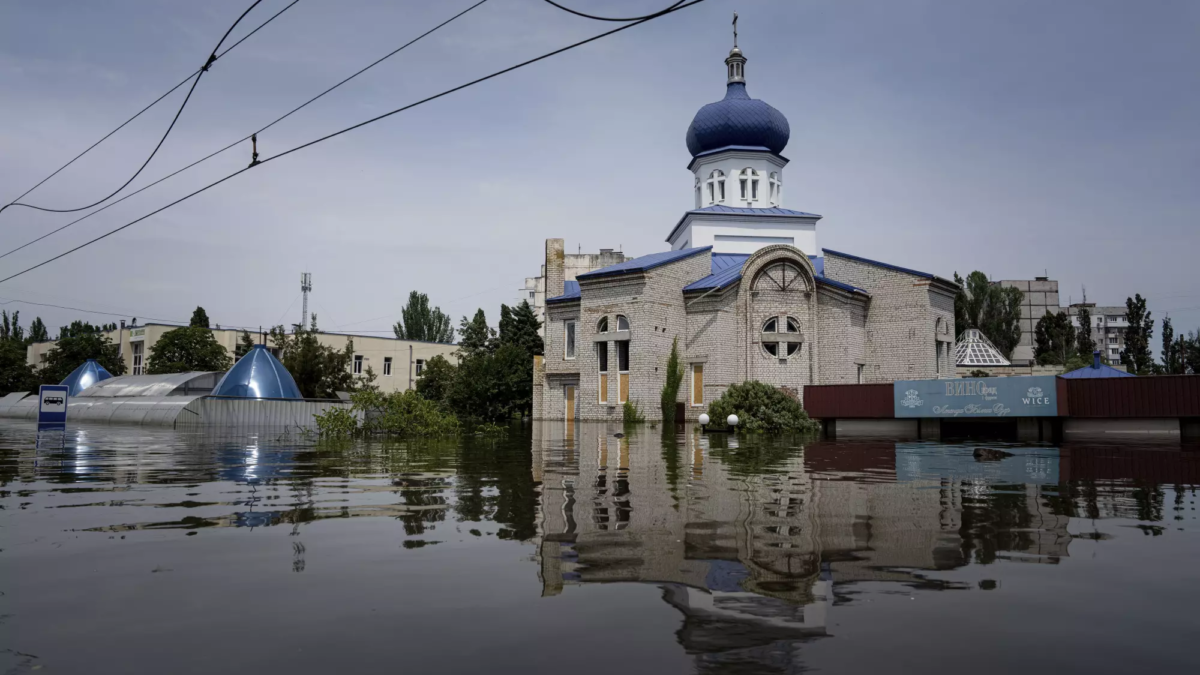The climate chain reaction that threatens the heart of the Pacific – “When are the fish coming?”

By Simon Denyer and Chris Mooney
12 November 2019
SHIRETOKO PENINSULA, Japan (The Washington Post) – Lined up along the side of their boat, the fishermen hauled a huge, heavy net up from swelling waves. At first, a few small jellyfish emerged, then a piece of plastic. Then net, and more net. Finally, all the way at the bottom: a small thrashing mass of silvery salmon.
It was just after dawn at the height of the autumn fishing season, but something was wrong.
“When are the fish coming?” boat captain Teruhiko Miura asked himself.
The salmon catch is collapsing off Japan’s northern coast, plummeting by about 70 percent in the past 15 years. The disappearance of the fish coincides with another striking development: the loss of a unique blanket of sea ice that dips far below the Arctic to reach this shore.

The twin impacts — less ice, fewer salmon — are the products of rapid warming in the Sea of Okhotsk, wedged between Siberia and Japan. The area has warmed in some places by as much as 3 degrees Celsius since preindustrial times, making it one of the fastest-warming spots in the world, according to a Washington Post analysis of data from the nonprofit organization Berkeley Earth.
That increase far outstrips the global average and exceeds the limit policymakers set in Paris in 2015 when they aimed to keep Earth’s average temperature rise “well below” 2 degrees Celsius.
The rising temperatures are starting to shut down the single most dynamic sea ice factory on Earth. The intensity of ice generation in the northwestern Sea of Okhotsk exceeds that of any single place in the Arctic Ocean or Antarctica, and the sea ice reaches a lower latitude than anywhere else on the planet. Its decline has a cascade of consequences well beyond Japan as climate dominoes begin to fall. [more]
The climate chain reaction that threatens the heart of the Pacific


